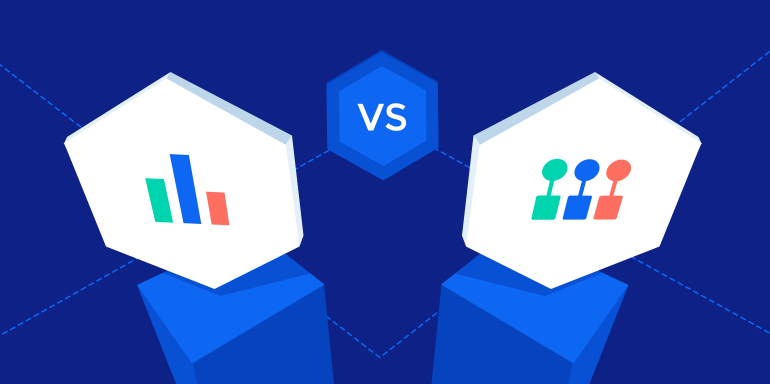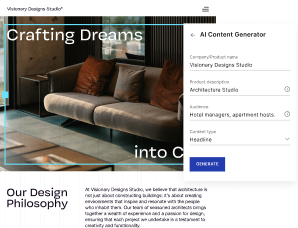Advertisers aim to deliver a positive customer experience for audiences by creating messages that audiences find easy to understand, useful, and relevant.
Personalization and optimization are processes that help advertisers create pre-click and post-click campaigns that deliver a positive user experience and increase business growth.
Today’s post highlights the key differences between personalization and optimization, how to use both on Google and Facebook, and why you need both for the best post-click landing pages.
What is optimization?
Optimization enables digital advertisers to improve their campaign; it is a circular process of data collection, testing, and making improvements to campaigns based on the findings you collect from testing. It happens at both the pre- and post-click stage.
Optimization at the pre-click stage
At the pre-click stage, Google Ads and Facebook Ads enable you to run highly-targeted campaigns with a variety of optimizations. Let’s start with Google Ads.:
Google Ads
- Advertisers can apply ad extensions to their ads for audiences, and can use Google’s Keyword Planner tool to estimate how many clicks a keyword is likely to generate each day.
- Location targeting allows your ads to appear in the geographic locations that you select. This targeting helps you focus your advertising on the specific areas you want to attract customers, and restricts it in areas where you don’t.
- Negative keywords exclude search terms and focus on phrases that are most relevant to your campaign. This optimized targeting approach can put your ads in front of interested users and increase your ROI. You can also use cookies on your website to collect information about a user’s experience and then retarget them with specific ads.
By optimizing the ad creation process, the right audience sees a relevant ad at the right time. An optimized ad has a headline that includes the offer’s UVP, a relevant and appealing image (for display ads), copy that gives the user information about the offer, and a CTA button that contrasts with the page and tells the visitor the next step.
Clarizen’s search ad demonstrates all of that because it’s relevant to the user’s search term, the headline explains what the product does, and the copy describes various product features:
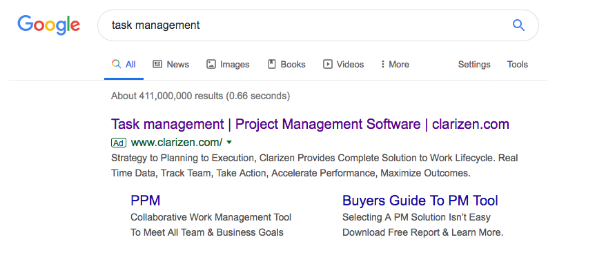
For display ads, Casper’s ad below is the perfect example. The headline gives the user an incentive to click, the deadline adds urgency to the offer, the image is relevant to the product, and the CTA button tells users what to expect next:

Facebook Ads
Unlike Google Ads, ads on the social network are not keyword driven, so optimization for the platform includes different options.
- Facebook offers advertisers Optimizing for Ad Delivery, which aims to get you desired results as efficiently as possible. For example, when you optimize for link clicks, you can show your ads to an audience who are most likely to click the ads.
- Geo-targeting ads is available to promote your offer in only locations you specify.
- The Meta Pixel can track user behavior on your website or post-click page and then you can retarget specific ads to those users.
In addition to ad delivery, Facebook also optimizes the campaign setup process by pre-selecting the best options for you, like ad placement. In this case, it applies to your campaign, your budget, and helps you narrow down the target audience.
Churn Buster’s Facebook ad explains the service’s UVP and includes an image that highlights working together and productivity:
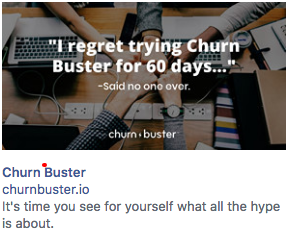
Optimization at the post-click stage
This involves improving the components of your post-click landing page. Meaning the post-click landing page, thank you page, and thank you email.
The two primary ways to optimize post-click landing pages are:
- Heat maps give you with a visual guide of visitor behavior, helping you see the post-click page through the visitor’s eyes.
- A/B testing includes testing your original page design, the control page (A) with an alternate variation (B). Tests typically involve directing equal amounts of traffic to both pages and seeing which variation outperforms the other.
Heatmaps collect data on post-click pages, which help you form a hypothesis which you can run A/B tests to prove or disprove. You can collect customer data for A/B testing through Google Analytics, user recordings, and surveys.
Optimized post-click landing pages provide the best user experience, which then translates into more advertising conversions.
All elements of an optimized post-click page — from the headline to the customer testimonials are relevant to the offer being promoted, are useful for the user who’s trying to solve a problem, and easy for them to understand.
The best post click pages don’t include off-page navigation links; instead they include a persuasive headline, copy that explains the UVP, eye-catching and relevant media, a contrasting CTA button with personalized copy, and trust elements like customer badges or testimonials.
State Farm example
State Farm’s post-click page features a headline that explains the service and a CTA button that tells the user what they can expect to see next:
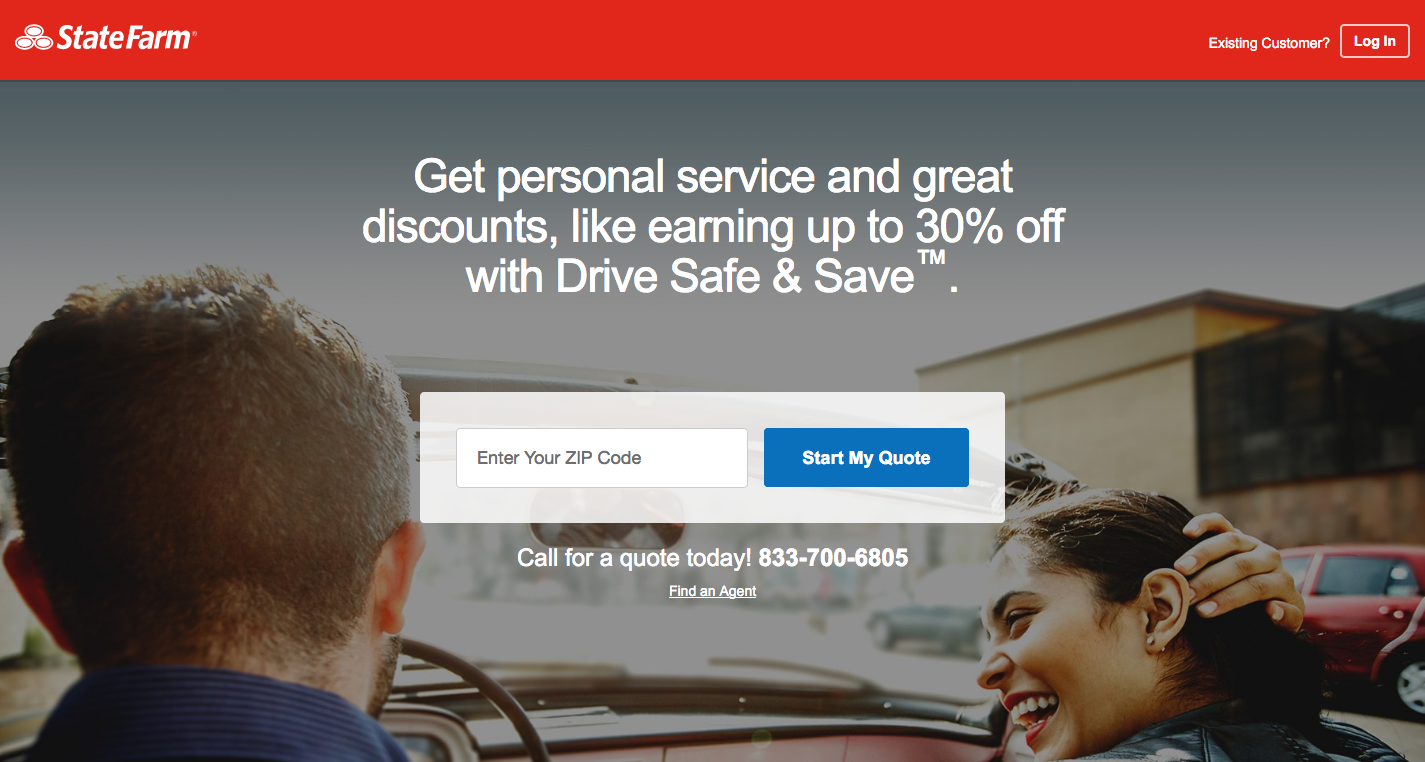
What is personalization?
Personalization is the buzzword word in digital advertising because it can reduce acquisition costs by as much as 50 percent, lift revenues by 5 to 15 percent, and increase the efficiency of marketing spend by 10 to 30 percent.
Personalization stems from behavioral data. The first step of personalization involves grouping together customers who have similar behaviors and needs. Then comes understanding the customer journey for every audience segment you’ve defined. The customer journey includes the series of interactions a user has with your brand from initial consideration, to purchase and use, and then to subsequent purchases.
When you combine the user segments and customer journeys you create multiple micro-segments, which form the basis of 1:1 personalization.
Personalization at the pre-click stage
At the pre-click stage, sophisticated advertising platforms provide you with options to segment audiences and create hyper-targeted ads that your target audience are likely to click. Also included in the pre-click stage are creating ideal customer profiles to know who to target your offers to.
Google Ads
- Multiple audience targeting options exist such as basic demographic data, interests, behavior, browser, device, etc. For display and video campaigns, custom intent audiences allow you to reach the ideal audience by segmenting ad groups according to the specific keywords and phrases you would like to target. You can also use ad suggestions to personalize and improve ad performance.
Facebook Ads
- You can target audiences based on users’ behavior, interests, location, connections, and demographics. You can also use the dynamic creative option where Facebook finds optimized ad creative combinations by taking multiple ad components (images, videos, titles, descriptions and CTAs) and automatically generates combinations of these assets across audiences. Dynamic creative ads serve your audience the most high-performing creative combinations.
- Ideal customer profiles (ICP): ICPs define who you are selling to. These are hypothetical representations of customers based on data like age, budget, industry, position, behavior, gender, etc. Once you’ve identified your ICP, you can target your ads to people ready and willing to buy. Read this post to determine how to create ICPs for your brand.
Then comes the post-click stage.
Personalization at the post-click stage
After creating targeted ads and detailed your ICP, it’s time to match each ad with a personalized post-click landing page.
Creating true personalized experiences for every audience that interacts with your ad is all about context and it starts with unique UTM parameters. Personalization is more about matching the narrative and context of a potential customer right after they click your ad.
Instapage examples
With 1:1 ad-to-page personalized experiences, you connect every targeted ad with a relevant post-click page. That page can perfectly match the user’s intent along with the keyword search query, like the example below. Clicking this Instapage search ad discussing integrations sends users to the following post-click landing page (above the fold only):
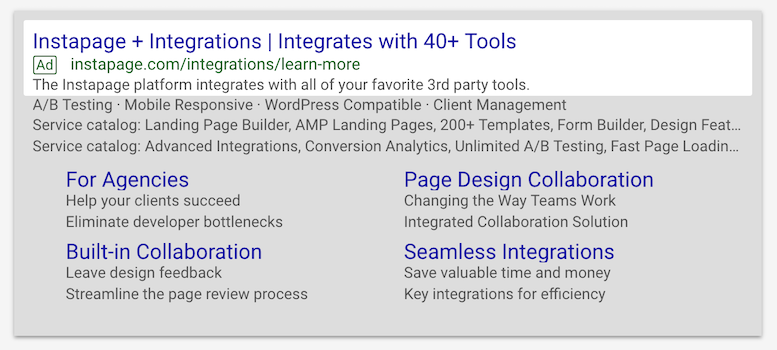
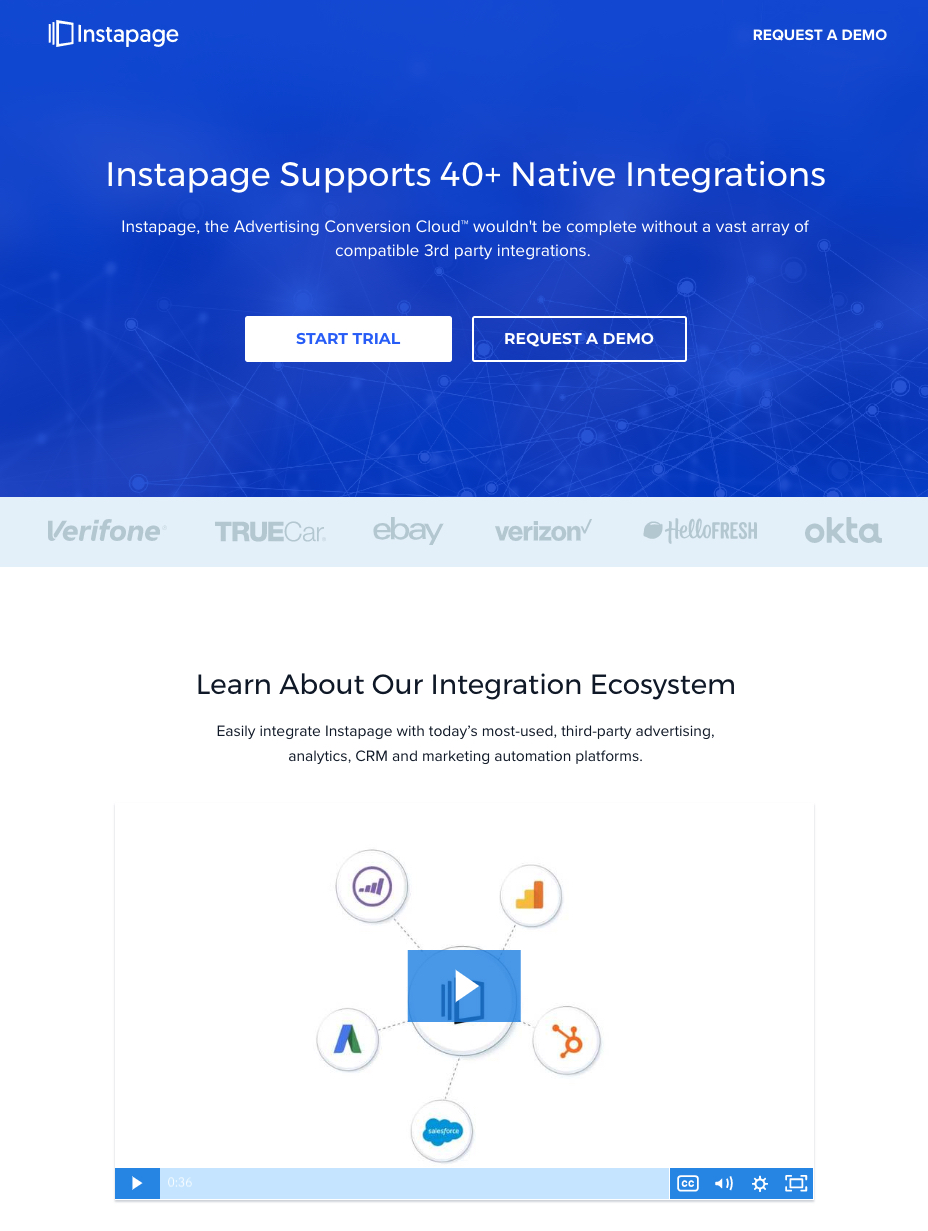
Compare that to this example on mobile where the ad discussing WordPress hosting sends you to this new experience:
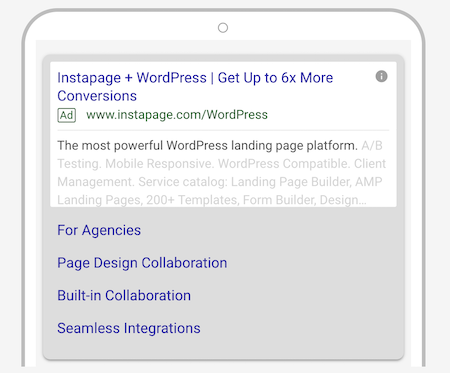
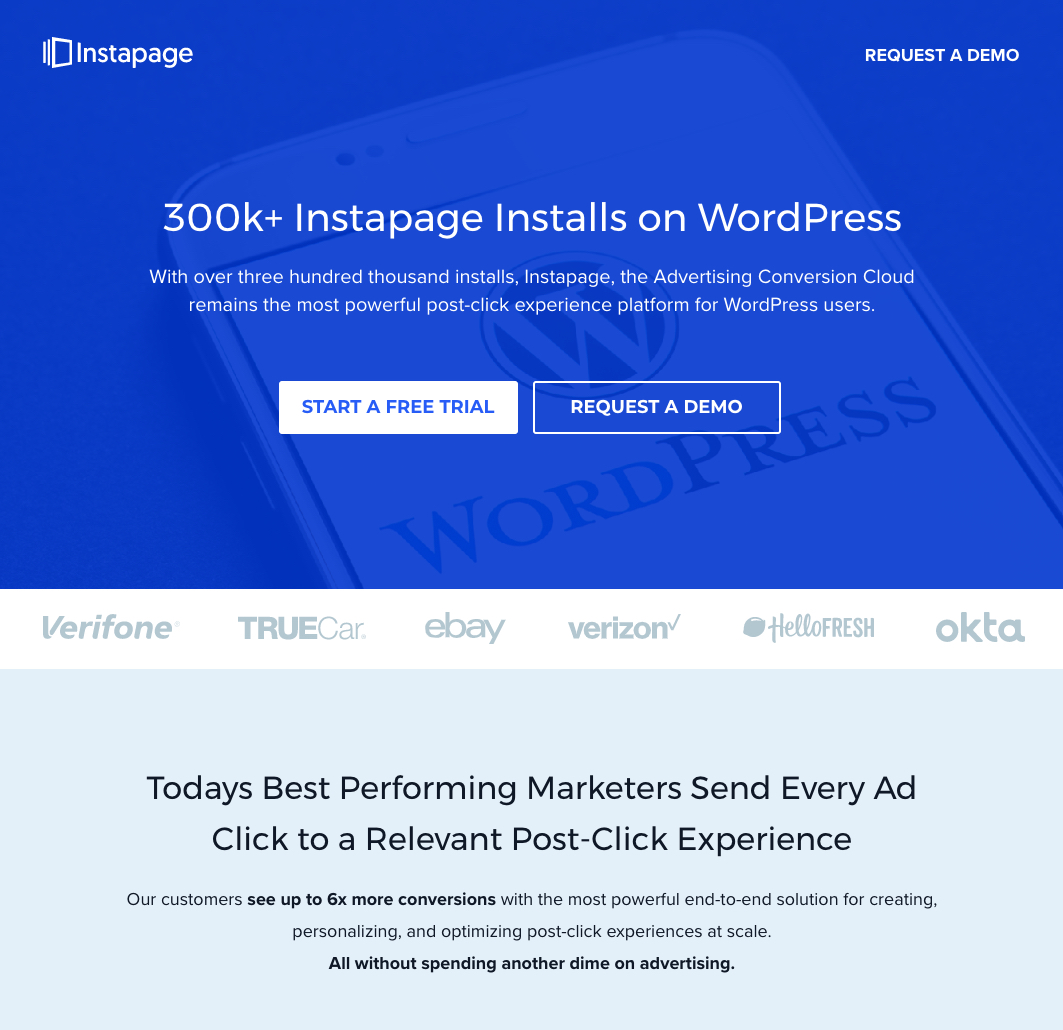
Both post-click landing pages use the exact same URL, except the last UTM parameter:


This slight difference may not look very different on the front-end to the untrained eye, but this personalization would not be possible without the server-side dynamic audience targeting. Effectively, this experience is using sophisticated targeting built into the ad platforms with UTM parameters.
Combine optimization & personalization
Although optimization and personalization use different methods to create a positive user experience, both processes have the same end goal: more advertising conversions.
Don’t think of it as optimization vs. personalization, but opt for an optimized and personalized approach with your advertising.
Use optimization to make the ad and post-click page more relevant and easy to use. Use personalization to make sure the right audience is targeted with the best message at the right time. See how to do both efficiently with an Instapage Personalization demo here.
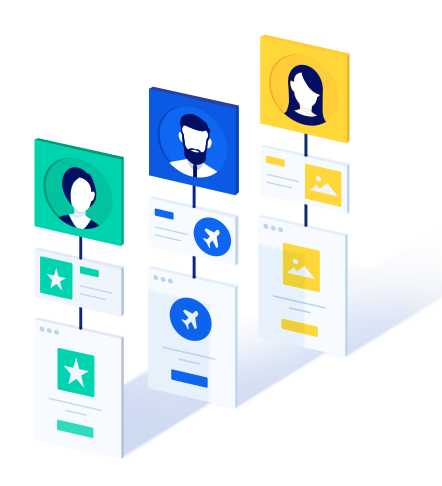
Get a Personalization Demo
See how easy it is to create unique experiences for any audience you target.
